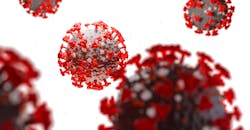At the beginning of the coronavirus outbreak in the United States, little was known about the novel coronavirus and the effect it would have on the country. The first case in the United States was reported January 22. Early in March, the Institute for Supply Management showed tentative February growth in U.S. manufacturing, despite early concern that the coronavirus—which had already battered China’s factories—might do the same here. It did.
That month, all three major Detroit carmakers instructed their employees to work from home if possible. Roche’s COVID-19 test received an emergency use authorization by the FDA. Tesla Motors resisted some of the first “stay-at-home” orders. Manufacturers scrambled to make decisions about a highly infectious virus without knowledge of best practices or guidance of if they counted as “essential industries.”
It’s been roughly 11-12 weeks since the chaotic first days of the COVID-19 pandemic in the United States, and 10 weeks since IndustryWeek has been issuing daily updates to keep readers abreast of the highly volatile situation. In those 11 weeks, entire state economies have been shut down and reopened; factories have closed and reopened, or remained dark; more than 40 million have people applied for unemployment insurance and more than 100,000 people in the United States have died.
The situation remains volatile, but notably less so. Manufacturers with little to no information in the early days of the pandemic have established protocols for reducing the spread of the virus, and states have begun to lift pandemic-era quarantine orders. In light of the changed situation, the editors have decided to gradually ramp down IndustryWeek’s COVID-19 updates. Pending further developments, future updates will come out every other day or once a week.
Puerto Rico’s Big Pharma Push
As manufacturing companies seriously reevaluate the stability of their international supply chains, one part of the U.S. in particular is emerging as a promising candidate for the future of the pharmaceutical supply chain—Puerto Rico. The U.S. territory is a manufacturing center for 12 of the world’s 20 top-grossing pharmaceutical companies, including Johnson & Johnson, Roche, Pfizer, Novartis, and Merck.
“Because of our existing base, Puerto Rico has ramped up processes very quickly” during the coronavirus pandemic, writes Rodrick T. Miller, leader of Invest Puerto Rico. According to Miller, the island territory “is well-positioned to boost production to unprecedented levels, attract additional manufacturers to the island and reaffirm its position as the essential manufacturing hub in the U.S.” Read the full story here.
ISM Shows Manufacturing Contracting at a Slower Rate
In a slightly heartening sign, the Institute for Supply Management’s Purchasing Manager’s index rose to 43.1% in May, up from 41.5% in April. A number listed under 50% indicates market contraction, which means this month’s results show manufacturing contracting less than it had in April—potentially a sign of recovery. The manufacturing PMI plunged 7.6 between March and April, its steepest fall since the 2008/2009 financial crisis.
Manufacturing CEOs surveyed as part of the report signaled optimism amid still-disappointing numbers. “Despite the COVID-19 issues, we are seeing an increase of quoting activity. This has not turned into orders yet, but it is a positive sign,” said one surveyed computer & electronics CEO. Read the full story here.
Remdesivir Shows Limited Benefits
Gilead Science Inc.’s COVID-19 treatment, remdesivir, showed promising results in government run tests and received an emergency use authorization in April. According to latest results from phase 3 human trials, though, the drug only caused a modest improvement in a group which took the drug for 10 days. According to Bloomberg News, those who took the treatment for 10 days fared slightly worse than those who received only five days. Those who received five days of the treatment saw 76% showing improvement over the course of the trial, compared to only 66% given standard of care.
About the Author
Ryan Secard
Associate Editor
Ryan Secard joined Endeavor B2B in 2020 as a news editor for IndustryWeek. He currently contributes to IW, American Machinist, Foundry Management & Technology, and Plant Services on breaking manufacturing news, new products, plant openings and closures, and labor issues in manufacturing.
